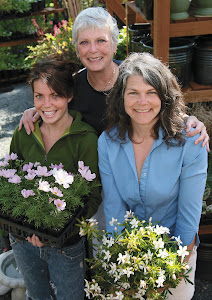Planting spring bulbs
If you want to fill your garden with color next spring, plant bulbs. Bulbs provide a good investment for money spent and supply years of spring color in your yard. Fall is the prime time for planting of hardy spring flowering bulbs. In our mild climate most bulbs can be planted October through December.
When buying bulbs check they are healthy and as fresh as possible, avoid any that are damaged, shriveled, and go for firm plump bulbs.
Bulbs in the landscape
Planting bulbs in a herbaceous border will help to fill in gaps and provide color and interest before perennials and shrubs begin to grow in early spring. Drifts of single species can be planted interesting combos, and splashes of color to brighten dull early spring days.When planted en mass, spring-flowering bulbs make a valuable contribution to formal bedding displays. Try growing groups of early-flowering tulips, or daffodils in a bed, which will be occupied by annuals later in the summer. As a general rule, the larger, showy varieties are better suited to a formal position in the garden.
Bulbs in pots
If you want a great patio display, try growing bulbs in pots. Keep it simple by planting a variety on its own. When growing bulbs in a pot, pick a container that is the right size and will complement your chosen bulbs. If you are using a clay pot with a large drainage hole in the base, cover it with a piece of broken pot. Fill pots with general-purpose compost, mixed with a handful of horticultural grit to improve drainage. Water after planting.Naturalising bulbs
Many spring-flowering bulbs are ideal for brightening up the base of trees before they come into full leaf. The soil beneath trees is moist and light, offering the perfect growing conditions for scillas, anemones, erythroniums and crocuses.Bulbs such as dwarf daffodils, crocuses, snowdrops and cyclamen, and chinondoxia can transform a dull looking lawn into a wonderful display of color. To achieve a natural look, throw bulbs up in the air and plant them exactly where they land in the grass. In order to save time, try planting a large number of small bulbs by lifting a piece of turf and planting a group of bulbs in the soil.
The aim is to make it look as though they have decided to grow there by themselves. Allow plants to die down after flowering before mowing over the lawn. Alternatively, plant bulbs in defined areas so that it's possible to mow the lawn around them.
Before deciding where to plant bulbs in the landscape, note that most hardy bulbs originate from the Mediterranean, thriving in a warm, sunny climate in freely draining soil. Early spring bulbs bloom before most trees or shrubs leaf out, they can successfully be planted under deciduous trees and shrubs. Most bulbs have a long dormant period, requiring little attention for much of the year. Good drainage is key, as many bulbs are prone to rot while dormant.
Planting bulbs
The general rule of thumb for planting spring bulbs is to plant two to three times as deep as the bulbs is tall, and two bulb widths apart Planting depth is measured from the bottom of the bulb. Plant bulbs with the nose of the bulb upward and the root plate downward. It is usually easy to distinguish the pointed top, and fatter bottom of your bulbs, however on those you are unsure plant sideways.
The best method of planting is to dig and loosen the entire bed to the proper depth. Properly preparing the soil for bulb planting is important. Good soil drainage is essential in raising bulbs. If you have a soil with a high clay content, it can be improved by adding compost, peat moss or some other source of organic material. The organic material should be worked in the top twelve inches of soil (eighteen inches is even better).
Press the bulbs into the soil in the planting area and cover with soil. Because the soil in a spaded bed is better drained and prepared, the planting will last longer. This method of planting is preferred over trying to plant bulbs one by one with a bulb planter. In our clay soils bulb planters do not work well, if at all.
Looking after bulbs
No need to water up to bloom, but it is important to fertilize and water the remaining leaves after bloom. Care after flowering is essential and a good show next year is dependent on it. Deadhead the flowers, but never remove the leaves, they should yellow out naturally. Watering after the foliage has died down can be harmful. Bulbs are prone to rot during summer dormancy. In winter we may not see them but they are actively putting down roots.Fertilization
Both spring bulbs need phosphorous to encourage root development. Keep in mind that phosphorous moves very little once applied to the soil. Some bulbs are planted 6 to 8 inches deep. Mix bonemeal or superphosphate, with the soil in the lower part of the planting bed as it is being prepared.If bulbs are going to be maintained in a planting bed more than one year, it is important to supply additional fertilizer. Spring flowering bulbs should get a shot of bulb fertilizer in the fall, and two cups of bonemeal per ten square foot area. As soon as the shoots break through the ground in the spring, repeat the fertilizer application. Fertilize again after flowering has finished.




No comments:
Post a Comment